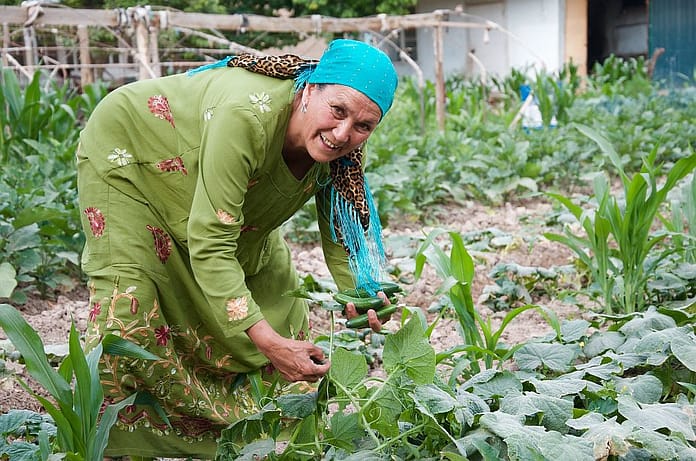There is now a successful solution to reduce vulnerability to droughts in South Asia by providing national authorities the maximum possible lead time to put mitigation strategies into place. A next generation of South Asia Drought Monitoring System (SADMS), developed by International Water Management Institute (IWMI) in a close partnership with Indian Council of Agricultural Research (ICAR) is aimed at addressing the existing and potential challenges to drought management and at providing a framework for proactive drought mitigation measures across nations in South Asia. The tool was launched on August 31 in the three-day regional workshop organized by SAARC Disaster Management Centre (IU) along with CGIAR/IWMI, ICAR and the United Nations Office for Outer Space Affairs (UNOOSA). The event was held at SAARC Disaster Management Centre, GIDM Campus, Gandhinagar.

Drought is one of the most threatening natural hazards due to its creeping and invasive nature, which proliferates existing systemic vulnerabilities, creates new risks and consequentially manifests as multi-dimensional hindrances to the objective of sustainable development. South Asia has faced several droughts in recent decades and 50 major droughts have been reported since 1990, affecting over 750 million people with economic damages estimated at 7 billion USD. Mitigating drought risks helps support vulnerable communities to face the effects and impacts of drought conditions, through enhancing coping capacities such as preventive measures at the sub- national or local levels.
Dr. Mark Smith, Director General, IWMI during his opening remarks joining virtually from Stockholm Water Week, Sweden highlighted the capabilities of SADMS portal and the importance of strategic collaboration with SAARC member states to institutionalize the broader drought resilience initiatives.
SADMS incorporates multisource information namely access to real-time weather updates and open-access satellite data that provides farmers, extension workers and agriculture and water resources authorities with all the information needed to forecast, monitor and manage drought. Specifically, it provides seasonal, sub-seasonal and seven-day weather forecasts; monitoring tools to indicate when drought is present and, if so, the level of severity; and district-level agricultural contingency plans that can be put into action if the system indicates that triggers have been reached. The system, which covers Afghanistan, Bangladesh, Bhutan, India, Nepal, Pakistan and Sri Lanka, incorporates national- to regional-level datasets drawn from multiple satellites, observed data and other sources. Highlighting the importance of SADMS, Dr. Shirish Ravan, Head- UN Spider Beijing Office said, “Disaster is not only limited to developing nations now. Climate change is not sparing any country. Therefore, building resilience should be the key focus – where systems like SADMS will play a big role.”
The participants at the workshop were from key agencies and departments like Meteorology, Space Affairs, Agriculture, Irrigation, Revenue, Disaster management of the SAARC Member States. They were introduced to SADMS to discuss technical advances and challenges in using earth observation to help assess and monitor drought and explore possibilities of institutionalizing the SADMS at sub-national levels of the SAARC Member States and promote multi-institutional collaboration to manage drought risk.
“There was previously no integrated end-to-end drought monitoring and management system available for South Asia,” explains Giriraj Amarnath, who leads the SADMS program and Research Group Leader for Water, Risks to Development and Resilience at IWMI. “So, in 2014, we began work to develop this capability. As well as including monitoring and visualization capabilities, we wanted the data to go to appropriate users, so they could make informed decisions on how best to mitigate the drought risk. At the time, no one was using complex remote sensing data for this kind of application; now it is routinely being used by organizations such as the Indian Council of Agricultural Research, Sri Lanka’s Disaster Management Centre and UN World Food Programme and the partners of World Bank.”
From 2017, the ICAR used SADMS to implement real-time contingency measures. Specifically, it helped farmers in three districts of Andhra Pradesh and Maharashtra to obtain drought-tolerant seeds, develop supplementary irrigation and apply potassium nitrate (which helps seedlings cope better with dry conditions). As a result, crop yields for soybean increased by 7–8 quintals (700–800 kilograms) per acre, pigeon pea by 5–6 quintals per acre and cotton by 12 to 14 quintals per acre. “India is a diverse country having different types of agroecology. It is facing droughts in almost every region and season. Therefore, platform like SADMS becomes important to timely monitor the droughts and prepare accordingly. The portal will play a quintessential role in the South Asia region”, said Dr. S Bhaskar, Assistant Director General (Agronomy, Agro-Forestry & Climate Change), ICAR.
The SADMS Platform is also already in operation in India with the support of ICAR-Central Research Institute for Dryland Agriculture (CRIDA) in Telangana, India. They use the system to know when to initiate their strategy for mitigating drought. If the seasonal forecast indicates that a moderate drought is anticipated, for example, then the department might advise farmers to switch from planting rice to a more drought-tolerant crop, such as millet. Later in the season, if crops have been planted but the seven-day forecast indicates there will be no rain, then arrangements could be made to provide supplemental irrigation.
IWMI won the Geospatial World Excellence Award 2020 for its innovative work using remote sensing technology to help nations monitor and mitigate the impacts of drought. Since IWMI launched SADMS in 2014, the system has guided national, state and district-level authorities in India and Sri Lanka to take timely action to prepare for drought. This has helped to cushion smallholders, many of them poor, from the worst effects of prolonged dry spells.
Future efforts are to collaborate with South Asian nations to institutionalize the SADMS, strengthening capacity development, and establish a drought action plan for long-term drought resilience measures.









